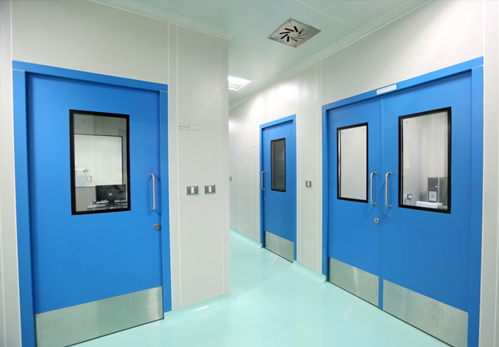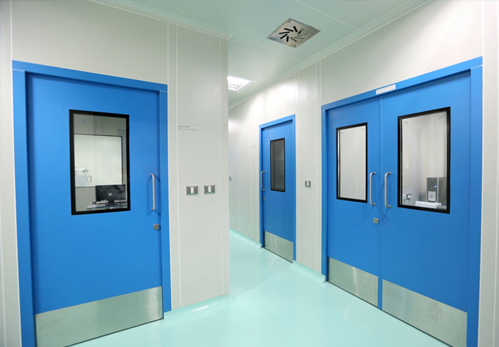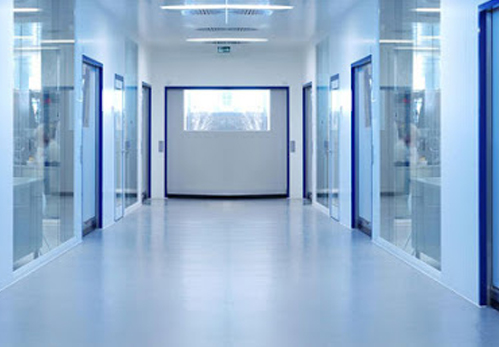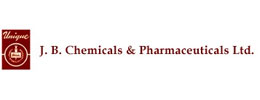Beer Cleanrooms are clean air environments where a specific size of air particulates is prevented from entering. Cleanrooms are typically used to reduce the pollution from unfiltered air in the manufacturing of products like pharmaceuticals, microprocessors, E-liquids, as well as food products.
Example of such pollutants that can be harmful to research and production include aerosol particles, chemical vapours, microorganisms, and fibrous materials and so many others. Our Beer Modular Cleanrooms are built to comply with the international organisation for standardisation (ISO) 14644-1: 2015.
Beer Modular Cleanrooms that fall within the standard of the ISO 14644-1:2015 are differentiated by classifications of class 1-9. Each Cleanroom is classed according to the maintained level and size of air particulates in the environment. The highest classification of Beer Modular Cleanrooms of this standard (Class 1) will be valued based on the smallest range of pollutants entering the clean air environment and lowest frequency whereas the Class 9 category of Cleanrooms, which represents the minimum classification, will be valued based on having a higher frequency and much larger contaminants entering the cleanroom.

Particle counters are used to gauge the Particles Per Cubic Metre (PPCMM) of Beer Modular Cleanrooms to determine their classification. The ISO Class 9 Modular Cleanroom’s PPCM has a semblance with regular atmospheric air but filtration of much larger air contaminants >5 microns is accounted for.
Smaller air particulates of sizes >0.2 and >0.1 microns are focused on with Class 1 Cleanrooms, which results in a much cleaner environment. The following is an example of the testing method.
A Modular Cleanroom that falls in Class 7 will be tested for the presence of an air particulate size of >0.5 microns where the highest particle count should be capped at 352,000. Modifications will have to be put in place if the Beer Cleanroom does not meet the requirements for this classification.
Production In A Contamination-Free Environment
Beer Modular Cleanrooms achieve the clean air quality by use of air filtration HEPA/ULPA technology. These technologies have undergone research evaluations to prove that they effectively reduce the quantity and size of air contaminants entering a cleanroom. Non-filtered air passes through Filter Fan Units (FFUs) creating a positive pressure area inside the cleanroom. The state of clean air is maintained by the positive pressure, which prevents the reflux of the non-filtered air into the environment through pipe openings.
With the above-mentioned cleanroom, contamination-free manufacturing is allowed to take place as air that hasn’t gone through the filtration unit will be prevented from entering the clean air space.

Modular Cleanroom Benefits
- Modular Construction
- Quick Assembly Time
- Versatility
- Reconfiguration
- Airflow Control
- Inexpensive Modifications
Deploying a Softwalls cleanroom solution is the first stage of producing a clean environment for production and it substantially lessens the risk of product contamination. The second steps that should be taken in mitigating contamination are measures that will avoid cleanroom personnel from bringing in pollutants. This introduction of contaminants can be prevented by the proper use of Cleanroom PPE such as gowning, hair nets and overshoes. This will reduce fibres and potential contaminants from entering the Softwalls Cleanroom and interfering with Production/ research. Personnel has to be taught pollution reduction techniques that will ensure required levels of contaminants in the cleanroom are maintained.
Cleanroom Design, Build & Validation
- Budgeting and planning
- Engineering, design & layout
- Airflow and filtration design
- Construction and Installation
- Full Certification of our product
- Industry-specific equipment installation
- Validation
Pharmaceuticals Sector And Saakvee

Saakvee is dedicated to providing state of the art Beer Modular Cleanrooms for the pharmaceuticals industry, utilising our over thirty years of expertise and our talented engineers. Our products are built with high quality and are designed to be reliable and durable. At Saakvee, every project installation process, from design to validation, is controlled by our managers to ensure the best results. We deliver outstanding cleanroom solutions that can compete at the highest level because we are in control of our design and installation processes.
With the sophisticated systems that we provide, including Ultra-bright LED panelling, Engineering Grade aluminium and silent high-efficiency Fan Filter Units, your productivity will be enhanced. Our confidence in the solutions that we provide is such that you’ll get a five-year warranty with all our Beer Modular Cleanrooms.
Industry Prerequisites
The use of a Cleanroom is crucial for any industry that requires their processes to have a reduced particulate occurrence to avoid the microbial spoiling and/or contamination of goods.
The use of air filtration in keeping out a certain number of air particulates makes the Cleanroom vital for maintaining a clean air space. Food production, semiconductor production, science and technology, medical devices manufacturing, as well as electronics production are some of the industries where Cleanrooms are used.

Rest assured that, with Saakvee, you’re only spending for exactly what you need. We can also point you in the right direction if you’re unsure about your Beer Cleanroom requirements.
Our Beer Modular Cleanrooms are built to comply to the international organisation for standardisation (ISO) 14644-1: 2015. Cleanrooms of this standard fall in different classes – from ISO 1-9. The classification of a Cleanroom changes dependent on the size and prevalence of the air particulate in the cleanroom. Cleanrooms that fall into ISO 1, which is the highest classification, will be tested for the lowest quantity and sizes of air particulates whereas those that fall into ISO 9, being the least, will be evaluated for the highest quantity and sizes of pollutants entering the clean air area.
To the determine the class of a Modular Cleanroom, particle counters are used to measure the size and quantity of particulates in Particles Per Cubic Metres (PPCM). Every particle counter determines the size and quantity of air particulates. Evaluations for ISO class 9 Cleanrooms are aimed at the removal of larger air contaminants (>5 microns) as they have the PPCM of suburban air whereas the elimination of smaller air pollutants (>0.1 and >0.2 microns) are accounted for in ISO 1 cleanrooms.
Modular Cleanroom Services
- Design & Build
- Free Site Survey
- Free Design Service
- Cleanroom Planning
- Construction and Installation
- CNC Engineered
- Training & Support
- Discounted Service Contracts
- Remedial Works
- Panel Repairs
- Alternations
- BMS Management
- Cleanroom Certification
- Differential Pressure Qualification
- Servicing Testing Validation
- Smoke Testing
- DOP Testing
Containment Solutions

Containment solutions are ideal in cases where you have hazardous materials that need to be prevented from making it to the outside air from the cleanroom. These systems can be installed in a modular cleanroom, giving it the capability to shut in harmful substances coming from entering the external environment with filters like the HEPA, ULPA, or Carbon filters while keeping the internal area environment protected from unfiltered air particulates. At Saakvee, we have the expertise to deliver containment solutions that are ideal to your particular needs that can trap in harmful chemicals and prevent them from making it to the outside air, which will see you work within the requirements of your regulators.
Containment solutions can differ due to the fact that hazardous materials are different from each other based on quantity and use of each cleanroom. This entails the need for custom made containment systems for every customer. We’ll consult with you to make sure we deliver the required system for your use.












Airflow And Filtration
Our Cleanrooms are designed to be compliant to the specified ISO 14644-1:2015 grading. With this in mind, we take into consideration the level of air filtration required and the end function of the cleanroom. The level of air filtration required is determined by the air changes per hour (ACH), this determines how many Filter Fan Units are to be used in the cleanroom. What we also determine by the strategic positioning of the FFUs and exhausts is the flow of air around the cleanroom. This can mean the difference between a uni-directional (laminar flow) and a non-unidirectional (turbulent flow) airflow around a cleanroom, potentially leading to a contaminated product. With this in mind, we can greatly increase the number of ACH and control the air flow within the cleanroom.
Filtration of air is controlled by our ultra-quiet, high-efficiency filtration modules. These filtration modules automatically compensate for a build-up of dust and other materials that occur over time within a HEPA/ULPA filter increasing the fan speed to reach the set flow rate. This increases the life of the filter, reducing cost overtime for the end user.
Cleanroom Features
- GMP
- ISO 4-9
- ISO 14644
- Low Power Consumption
- Environmentally Friendly
- HEPA Filters
- Air Filtration
- Fan Filter Units
- Cleanroom Ceiling System
- Temperature Control
- Access Control
- Inter Lock Door Systems
- Air Showers
- Unidirectional Airflow
- Desiccator Cabinets
- Horizontal Flow Wall Modules
- Horizontal Laminar Flow Clean Benches
- Laminar flow cabinets
- Laminar Flow Canopy
Cleanrooms Customised To Your Needs
At Saakvee there is no such thing as a standard modular cleanroom. Each Cleanroom we design is made to fit your unique work conditions and is designed with your needs in mind. We make each modular Cleanroom to order and make you part of the design process.
With Saakvee you have the option of doing almost anything with a cleanroom design. This means that your Cleanroom can be many shapes and sizes fitting the most obscure of rooms and can have a range of finishes. We have yet to find a design that we could not accommodate.

Our customisable options mean that all components of the Cleanroom such as doors, windows, lighting, ceilings and filtrations can be altered to better suit your needs. You also have the option of installing furniture, air showers, pass through chambers, fire suppression, air-conditioning and much, much more. We pride ourselves in being able to meet design requests however unique in shape and size they may be.
